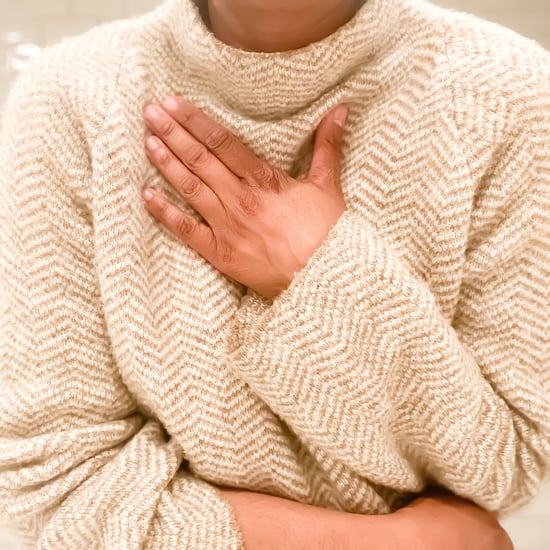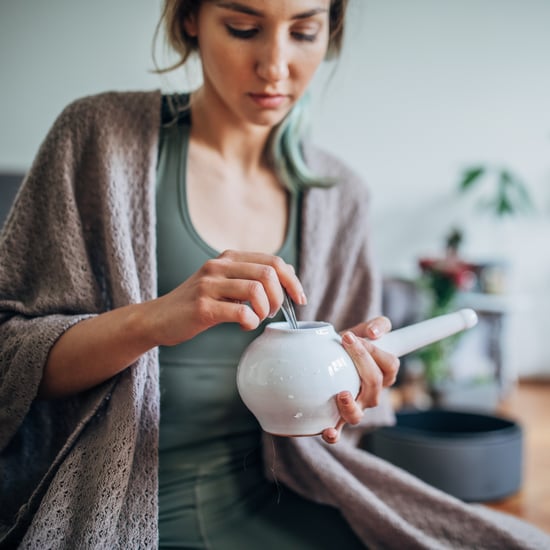Benefits of Kegel Exercises
5 Things You Should Know About Kegels, According to an Ob-Gyn and a DPT

Looking to increase your Kegel knowledge? It's not a bad idea as performing these pelvic floor exercises can yield better sex and help prevent incontinence. They're also especially helpful tools for pregnant people. However, to reap any Kegel benefits, they have to be performed correctly. It's also a good idea to know what they can't fix and when reach out to your doctor with questions.
Ahead, check out an educational rundown on essential Kegel facts and figures, as explained by experts.
Kegels Exercise the Pelvic Floor Muscles
Let's start with a quick definition of Kegels. As explained by Rachel Gelman, PT, DPT, and INTIMINA's pelvic floor health expert, Kegels are pelvic floor exercises that involve contracting and then relaxing the pelvic floor muscles. "The pelvic floor is a muscular hammock that is inside the pelvis. It supports the pelvic organs: bladder, colon, uterus, or prostate," Gelman said. The goal of performing these exercises is to strengthen the pelvic floor muscles.
Kegels Have a Few Benefits for Your Body
According to Alyssa Dweck, MS, MD, FACOG, a board-certified ob-gyn and sexual and reproductive health expert for INTIMINA, a stronger pelvic floor can help maintain the continence of urine, gas, and feces. That's why Kegels are often recommended for those with urinary incontinence and certain bowel issues.
Dr. Dweck also mentioned that having strong pelvic floor muscles helps keep the pelvic organs in the correct anatomic position. They're not a cure-all, though. Dr. Dweck added that Kegels will not help if one's uterus, cervix, or bladder is prolapsed or severely relaxed.
Kegels Can Help You Have Better Sex
Yep, it's true: mastering these moves may lead you to better sex. "Many report stronger orgasms and a stronger grip on a partner or toy with regular [pelvic floor] exercises," Dr. Dweck explained. "Much of sexual activity involves muscles and muscle contraction. The stronger the muscles, the stronger the contractions. Exercise also enhances blood flow; this includes to the genital muscles and structures."
Kegels Are Helpful During and After Pregnancy
While Gelman mentioned that anyone with a pelvis can benefit from Kegels, the exercises can be especially helpful for those who are pregnant and those in the postpartum period.
"Regardless of the mode of delivery (vaginal or C-section), the pelvic floor muscles are impacted during pregnancy, and as a result, a new mom may experience urinary or bowel dysfunction including incontinence along with pelvic pain and/or pain with sex," Gelman said. "All of these symptoms are common, but they do not need to be someone's new normal."
These concerns are commonly addressed with a pelvic floor therapist who may recommend certain exercises, and a doctor can help determine if this is a necessary next step.
Kegels Have to Be Performed Correctly to Reap the Benefits
To correctly perform a Kegel, you'll first want to identify the pelvic floor muscles. The Cleveland Clinic recommends trying to stop the flow of urine while on the toilet (but you should only do this until you identify the feeling), or inserting your finger into the vagina and then squeezing the muscles in the vagina. The resource further explains that these muscles you feel lifting in either event are the ones that are targeted during Kegels.
Therefore, in order to do Kegels, the Cleveland Clinic recommends starting by lifting and holding for three seconds, and then relaxing the pelvic floor muscles for three seconds before repeating.
As for how often to perform them, that may depend on the individual, but Dr. Dweck said she typically recommends daily Kegels, "especially for those who are concerned about a weak pelvic floor and its consequences." This could consist of 10 to 30 reps per day, or as one is able. Another bonus: Kegels can be done at almost any time.
While Kegels don't require the assistance of any equipment, Kegels trainers do exist. Dr. Dweck said these small devices, which are often meant to be inserted into the vagina, "can provide feedback on progress and allow for more intense pose."
One thing to definitely remember is that Kegels shouldn't ever hurt, so if you're experiencing pain, reach out to your doctor. Gelman added that people often perform Kegels incorrectly by just squeezing their butts or abdomens — your doctor can help provide technique advice here too.






